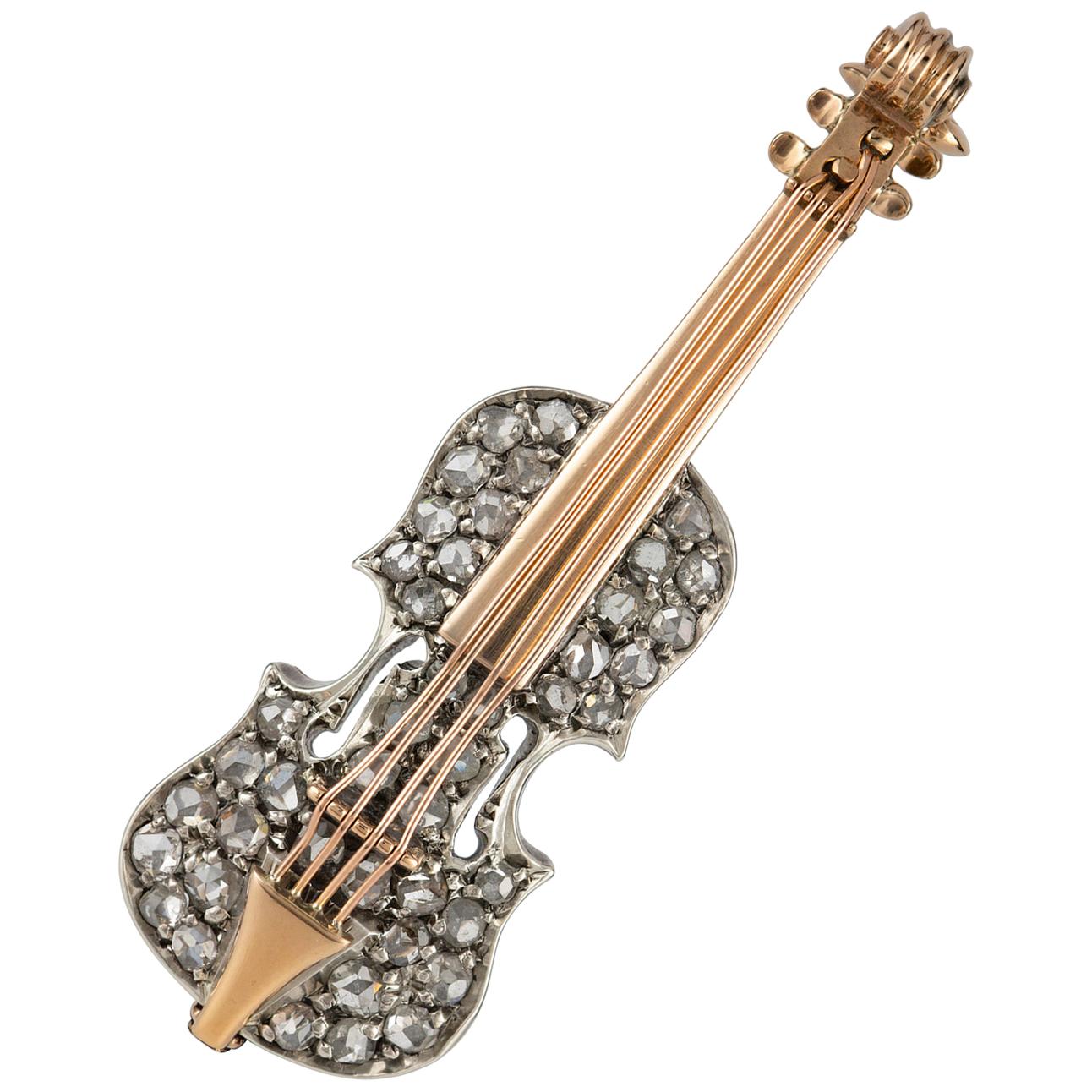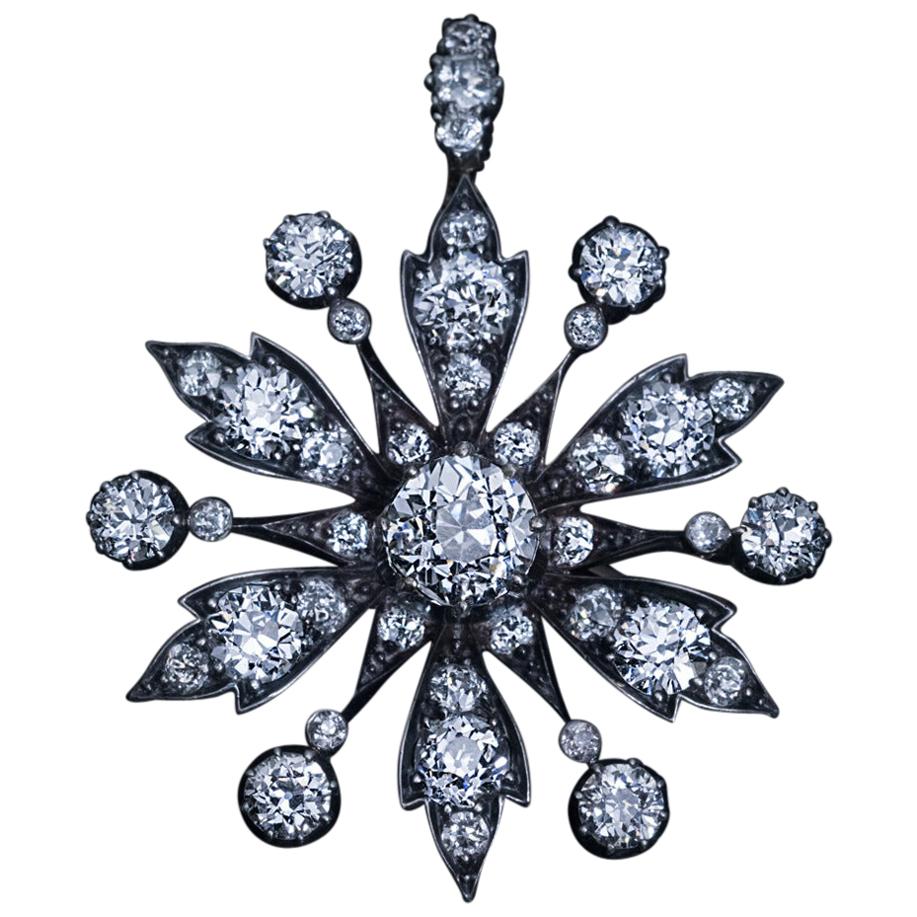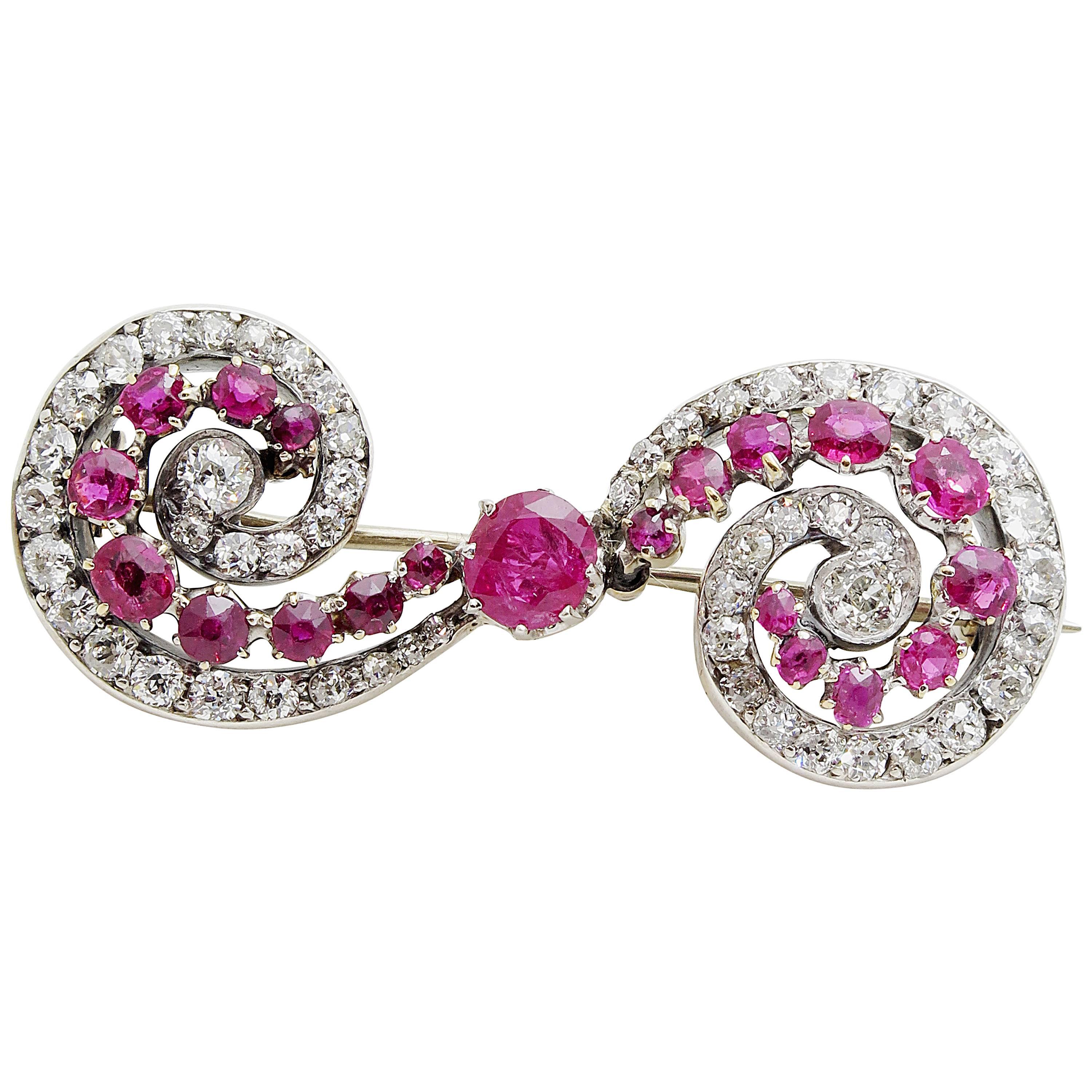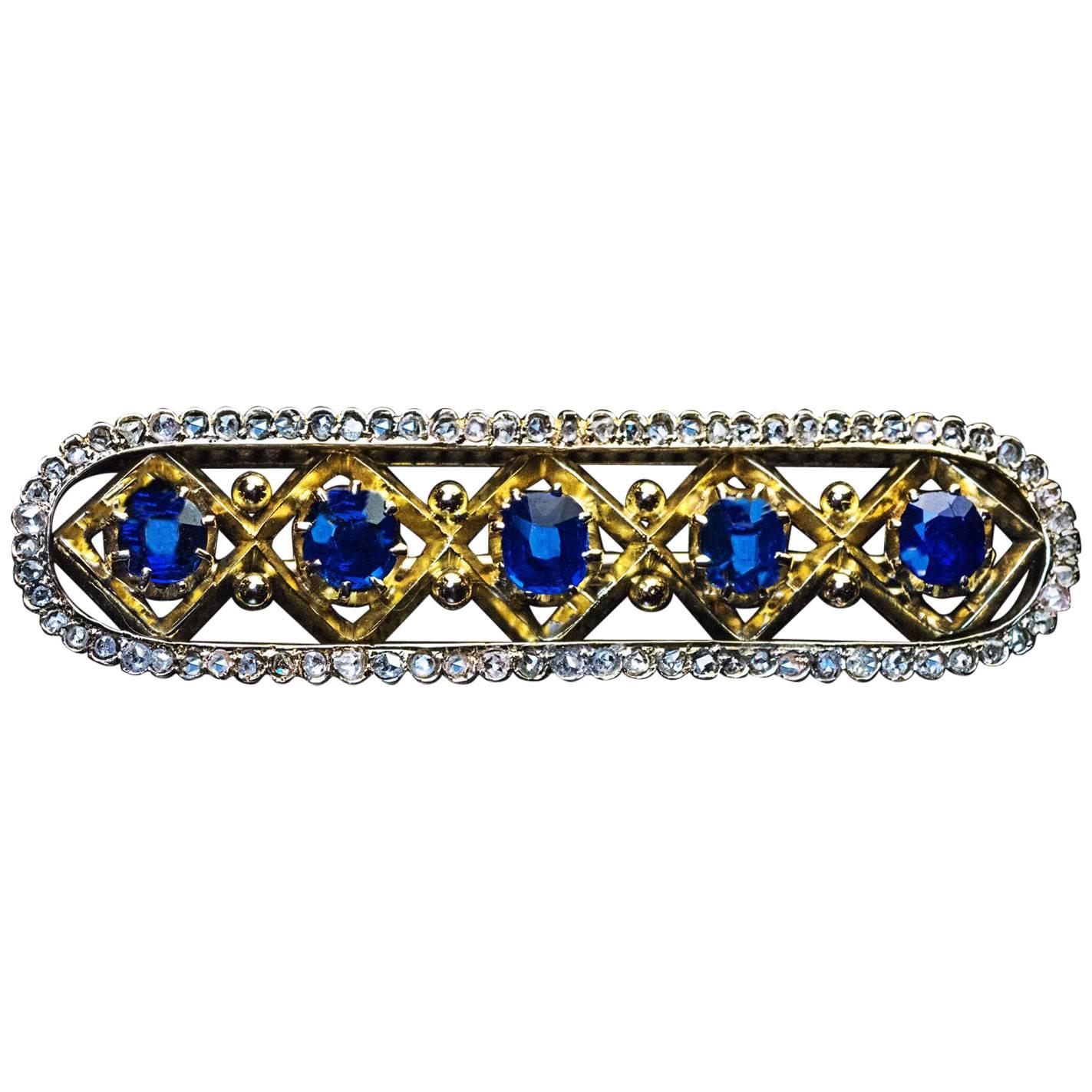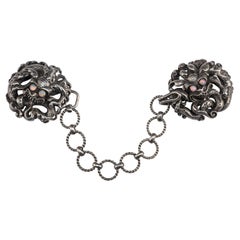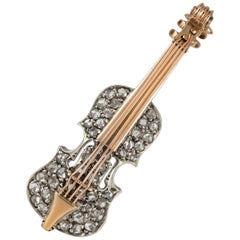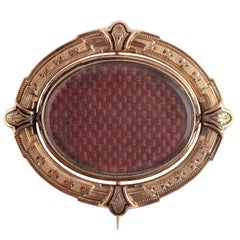
Late 19th-Century Brooch with Greek Coin, by Louis Wièse
View Similar Items
Video Loading
Want more images or videos?
Request additional images or videos from the seller
1 of 7
Late 19th-Century Brooch with Greek Coin, by Louis Wièse
About the Item
- Creator:Louis Wièse
- Metal:Silver,Gold
- Weight:15.4 g
- Dimensions:Diameter: 1.05 in (26.6 mm)
- Style:Revival
- Place of Origin:France
- Period:Late 19th Century
- Date of Manufacture:1870-1890
- Condition:Wear consistent with age and use.
- Seller Location:Chicago, IL
- Reference Number:Seller: J 350781stDibs: LU2334217473902
About the Seller
5.0
Vetted Seller
These experienced sellers undergo a comprehensive evaluation by our team of in-house experts.
Established in 1991
1stDibs seller since 2021
5 sales on 1stDibs
Typical response time: 13 hours
More From This SellerView All
- Late 19th-Century Silver and Opal Cape Clasp by Louis WièseLocated in Chicago, ILLouis Wièse Cape Clasp France (Paris), c. 1890 Silver, opals Weight 102.8 gr.; Length 22.23 cm.; individual clasp diameter(s) c. 44 mm. Two openwork roundels in relief show a Chinese dragon head in cast and chased silver, entwined by a serpentine body with bird’s feet and talons. The eyes are formed of opal cabochons. Both roundels are joined by a wire loop and hook as clasp and eight chain links of twisted wire with intersecting plain loops. Traces of gilt remain. On the reverse along the edge of both roundels is the maker’s mark “WIESE” for Louis Wièse. This beguiling cloak clasp...Category
Antique 1890s French Gothic Revival Brooches
MaterialsOpal, Silver
- Late 19th-Century Enameled Brooch with Diamonds by FalizeBy FalizeLocated in Chicago, ILAlexis Falize Brooch with depiction of Renaissance Lady France (Paris), c. after 1894 Gold, silver, enamel, diamonds Weight 10.7 gr.; Width 43.6 mm.; Height 22.3 mm. Gold rectangu...Category
Antique 1890s French Renaissance Revival Brooches
MaterialsDiamond, Gold, Silver, Enamel, 18k Gold
- Gothic Revival Gold Ring with Joan of Arc by Louis Wièse, Late 19th CenturyLocated in Chicago, ILJoan of Arc Ring by Louis Wièse (1852-1930) France, c. 1890 Gold Weight 9.3 gr.; Circumference 56.45 mm.; US size 7 3/4; UK size P ½ Cast and chased openwork gold ring with square section hoop, grooved on the lower half and forked at the shoulder to form a triangular frame for a Gothic trefoil...Category
Antique 1890s French Gothic Revival Cocktail Rings
MaterialsGold
- 19th century Water Squirt Ring in Silver and Gold with Rock CrystalLocated in Chicago, ILSquirt Ring West European, 1800-1900 Silver, gold, rock crystal Weight 9.4 gr.; circumference 60.38 mm.; cylinder length 41.2 mm US size 9 ¼ ; UK size S ¼ Fascinating nineteenth century party piece, incorporating an elegant and sparkling ring Description: Squirt ring made of a hollow silver cylinder with four ornamental bands and a cap with plunger. This holds the liquid, and when the plunger is pulled out and pushed back in the squirt mechanism is triggered. At the other end is a hollow ring through which the liquid flows and then squirts out of a small hole on the band next to the gemstone. The gold ring, angled to the cylinder, has a tubular hoop and a gold round-shaped cup bezel with a silver-set, facetted rock crystal gemstone. The ring is fully functionable. The cylinder lies concealed in the palm of the hand. Punched on the cylinder is a swan, the French guarantee mark for the fineness of silver on items of unknown origin (in use from 1893-1970). Along the gold hoop of the ring are four indistinct hallmarks: a helmeted head (?), two rectangular punch marks, one with lower case ‘g’ in the corner, and traces of two illegible punches. Provenance: Yves Brasseur (26 February—11 August 2005), Ghent, Belgium, a collector of rings who was a Belgian fencer of Olympic stature, having competed in this sport in the Olympics in the 1960s. Literature: The earliest account of a squirt ring dates to about 1770 with the description of a diplomatic incident at the Court of Frederick the Great. The French ambassador M. de Guines belonged to the diplomatic corps in Berlin, the capital of the Prussian Empire. His pompous behavior was widely mocked. Prince Dolgorouki, the Russian ambassador was invited to a gala dinner as a guest of honor with his newly wed bride. She was seated next to the French ambassador whom she squirted with water from a mechanism concealed in the palm of her hand, when he was admiring her jewel. He vowed he would throw a glass of water at her if she continued. The ambassador’s wife ignored his warning, and he in fact put his threat into effect. The guests at the dinner were obliged to keep a discreet silence surrounding this embarrassing occurrence. The fashion for such squirt rings appears to have continued into the nineteenth century, although few examples are known. The designs and materials vary: bronze ring with mask of Silenus in the Victoria and Albert Museum. Silenus, the god of wine-making and drunkenness, appears again on a squirt ring in form of a garnet cameo...Category
Antique 19th Century European Solitaire Rings
MaterialsRock Crystal, Quartz, Gold, Silver
- Renaissance Portrait Cameo of Emperor Vespasian in a Gold BroochLocated in Chicago, ILPortrait Cameo of Emperor Vespasian in a Gold Brooch Agate, gold Italy?, 16th century Weight 10.2 gr.; Dimensions 48.7 × 39 mm. Description: Three-layered agate cameo (black-white-...Category
Antique 16th Century Italian Brooches
MaterialsAgate, Gold
- 17th-Century Gold Band Fede Ring with HeartLocated in Chicago, ILFede Ring with Heart England, 17th century Gold, enamel Weight 1.88 gr.; circumference 44.77mm.; US size 3,1/4; UK size F 3/4 Elaborately decorated posy ring, with messages of love and affection. Gold band, flat on the interior, chased and engraved on the exterior with alternating hearts and rosette motifs. The centerpiece shows two cuffed right hands clasped together holding a heart. Inscribed inside the band in italic script: ‘For love not valer’. Traces of enamel have survived. The ring shows signs of wear through age and is in good wearable condition. The maker’s mark in rectangular punch inside the hoop has the initials ‘SW’, slightly indistinct due to the punch within the curvature of the hoop. Literature: Messages of romantic love on jewelry, and mottoes or inscriptions on plain gold bands go back to the Middle Ages. Beginning in the thirteenth century, ring brooches and rings were given as love tokens and the language of love was expressed in words and amatory motifs. Each element of this ring expresses love and affection, as well as the union of marriage. The clasped hands or ‘mani in fede’ (Italian term for hands in faith), is a motif derived from the Roman ritual of the joining of the right hands during the betrothal ceremony known as dextrarum iunctio. The right hand was considered to be sacred to Fides, the goddess of trust and good faith. The clasped hands as a symbol of love and marriage has continued in both the ceremony and rings through the centuries, even today. The alternating hearts and rosettes underline the love message concealed inside the hoop ‘For love not valer’, only to be known by the giver and recipient. The posy declares that the bond of love is more important than wealth. This fede ring is also a highly elaborate form of posy ring, which are usually simple gold bands with inscription...Category
Antique 17th Century English Band Rings
MaterialsGold
You May Also Like
- Late 19th Century Fly BroochLocated in London, GBA late 19th century fly brooch, the bee set with a dementoid garnet, a ruby eye, diamond wings and a pearl body, set in silver and gold, with a further pear...Category
Antique 19th Century Unknown Late Victorian Brooches
MaterialsAmazonite, Diamond, Garnet, Ruby, Yellow Gold, Silver
- Late 19th Century Diamond BroochLocated in London, GBA late nineteenth century diamond brooch, finely modelled in the form of a violin, the body encrusted with rose-cut diamonds and the strings, neck and head in rose gold, French Impor...Category
Antique 1890s French Late Victorian Brooches
MaterialsDiamond, 14k Gold, 9k Gold, Rose Gold, Silver
- Late 19th Century Mourning BroochLocated in Dallas, TX9 karat yellow gold brooch with black Taille d'Epergne. The central medallion rotates to show 2 views of the beautifully braided hair work.Category
Antique Late 19th Century Victorian Brooches
Materials9k Gold, Yellow Gold
- Lyra Diamonds Brooch, Late 19th CenturyLocated in Sežana, SILyra-shaped brooch – Made in Italy – Late 19th century. The brooch is set with 25 rose cut natural diamonds. The main body is made of gold, while the upper part and settings are in...Category
Antique Late 19th Century Italian Classical Roman Brooches
MaterialsDiamond, Gold, Silver
- Late 19th Century Butterfly BroochLocated in London, GBA Late 19th Century butterfly brooch. Set with approximately 7 carats of cushion shape, old and brilliant-cut diamonds with sapphire and rubies mounted in silver on top of gold. Leng...Category
Antique 19th Century Brooches
MaterialsDiamond, Ruby, Blue Sapphire
- Antique Late 19th Century Diamond Brooch NecklaceLocated in Chicago, IL1890s This convertible brooch / pendant of intricate floral design has a detachable bail and pin. The brooch / pendant is crafted in silver-topped 14K gold (front – silver, back – go...Category
Antique Late 19th Century Victorian Brooches
MaterialsDiamond, 14k Gold, Silver


